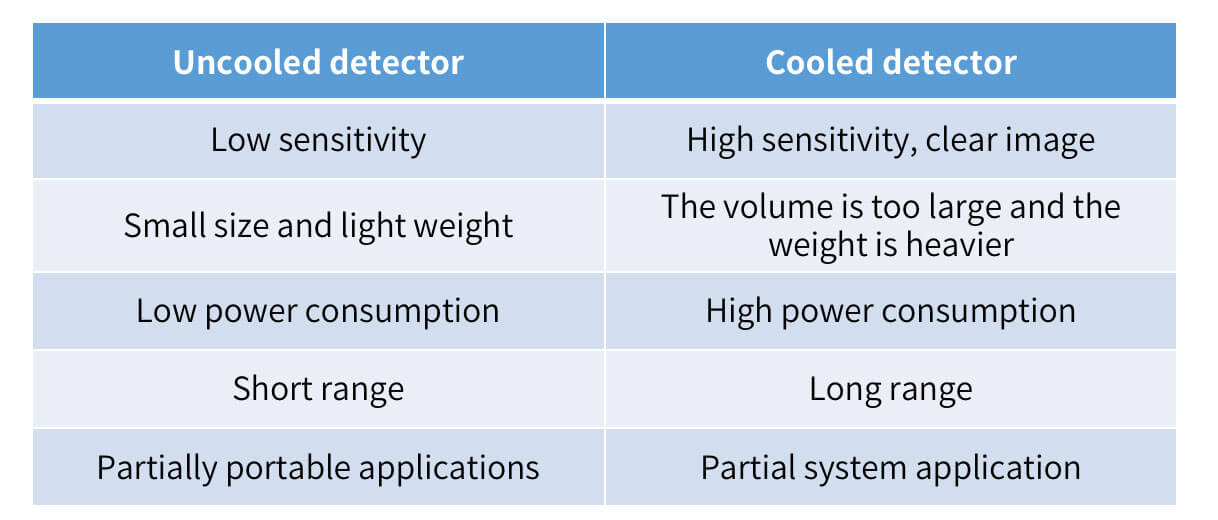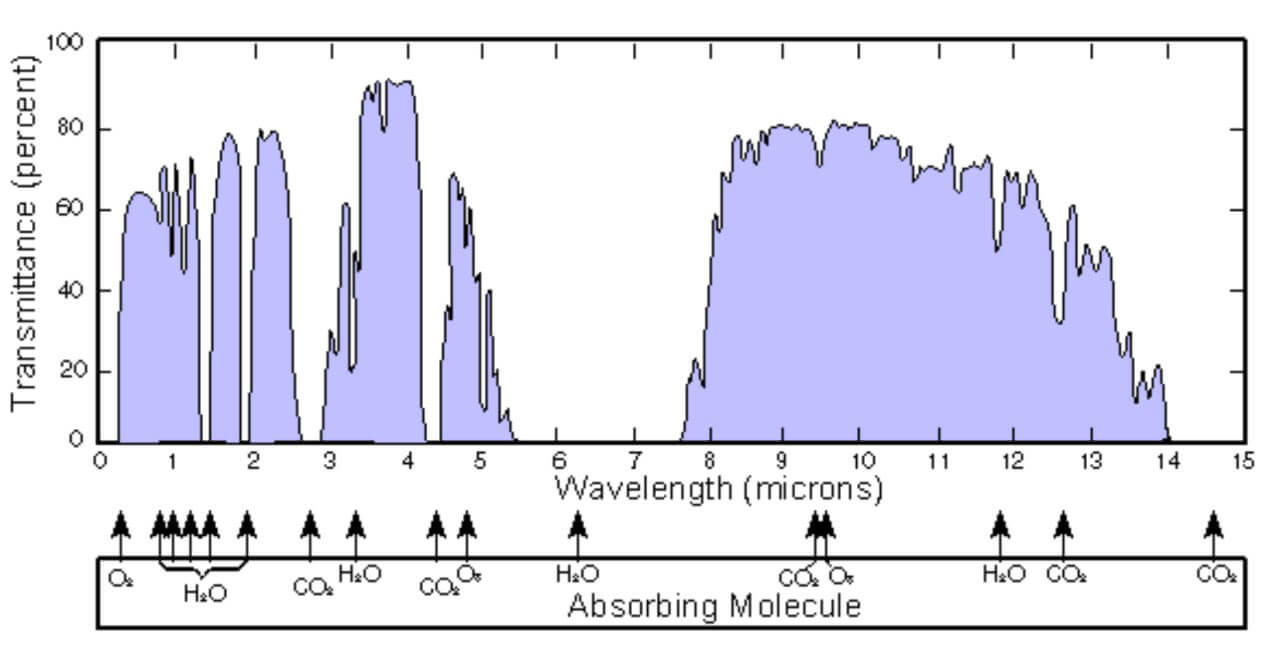Infrared thermal imaging technology converts invisible infrared thermal radiation into corresponding electrical signal, and forms infrared thermal image for naked eye observation after magnification and image processing.
The infrared detector is the core component of the whole infrared thermal imaging system, and it is the key to detect, recognize and identify the infrared characteristic information of the target. The performance of the infrared detector directly determines the quality of the infrared thermal imaging. From different perspectives, there are many different classification methods for infrared detectors:
According to the working principle of infrared detector, it is mainly divided into thermal detectors and photon detectors. Thermal detectors include pyroelectric, thermopile, microbolometer and so on. Photon detectors include photoconductive, photovoltaic, quantum well, superlattice and other detectors with different photon effects.
According to the response wavelength of infrared detector,
it can be divided into short wave infrared detector (1-3μm), middle wave infrared detector (3-5μm) and long wave infrared detector (8-14μm). The above three bands are also called the three atmospheric windows of infrared.


According to structure, it can be divided into unit detector, line detector and focal plane detector. If the unit detector and line detector are used for imaging, it must be equipped with the optical scanning mechanism, and the focal plane detector can realize gaze imaging.
According to the working temperature, it can be divided into cooled detector and uncooled detector. General photon detectors need to work at low temperature, so they are all cooled type. However, the thermal detector generally works in the room temperature range, and the performance improvement is not obvious when the working temperature is reduced.

Go Top